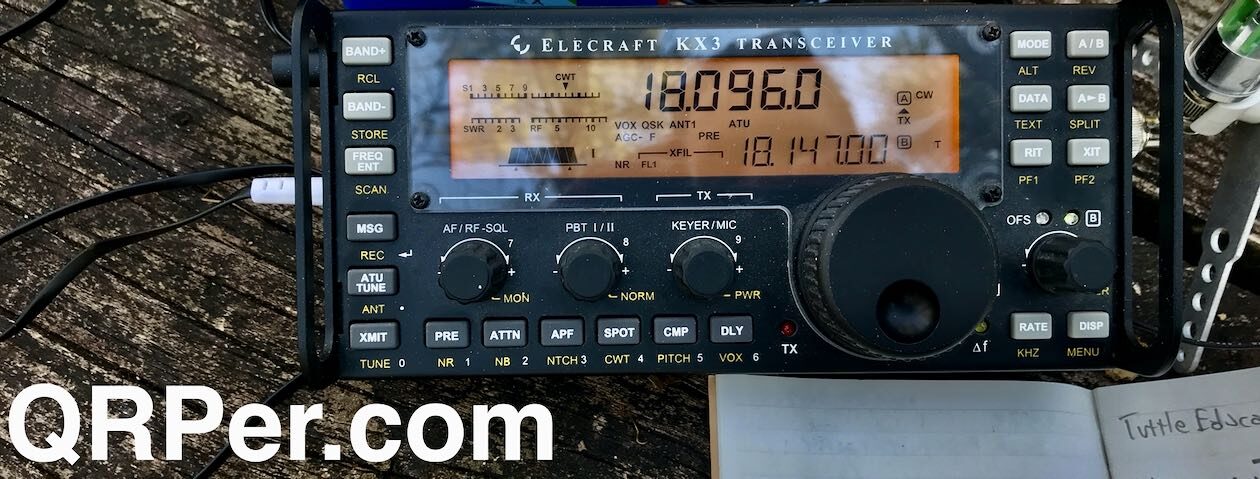Many thanks to Sam (WN5C) who shares the following guest post:
Notes from a homebrew POTA adventure
Sam (WN5C)
I recently wrote about the homebrew transceiver I built to operate on a month-long trip through the American Southwest. Upon arriving back in Oklahoma here’s the final outcome: 27 days, 40 parks, and 669 QSOs. I honestly can’t believe that the rig went the distance, or that I made so many contacts on 2 watts or less!
 The priority of this trip wasn’t radio, though. I’m an archaeologist and I’m starting a new research project that marries my historical interests with my love of two-way communication. In short, I’m studying the effects of how communication technology aided the American colonization and transformation of the western United States around the turn of the twentieth century. This means I walked and mapped single-wire telephone lines strung up in pine trees in northern New Mexico (used to connect fire lookouts with Forest Service ranger stations), a fascinating story of dramatic changes in land management. I also visited heliograph (sun-mirror signaling) stations established in southeastern Arizona by the U.S. Army Signal Corps in 1886 to assist in apprehending Geronimo.
The priority of this trip wasn’t radio, though. I’m an archaeologist and I’m starting a new research project that marries my historical interests with my love of two-way communication. In short, I’m studying the effects of how communication technology aided the American colonization and transformation of the western United States around the turn of the twentieth century. This means I walked and mapped single-wire telephone lines strung up in pine trees in northern New Mexico (used to connect fire lookouts with Forest Service ranger stations), a fascinating story of dramatic changes in land management. I also visited heliograph (sun-mirror signaling) stations established in southeastern Arizona by the U.S. Army Signal Corps in 1886 to assist in apprehending Geronimo.

I look forward to relocating and studying the artifacts from more of these heliograph sites (mostly on remote peaks) to reconstruct this communication network and understand the lives of both the soldiers and the Apache, and how this novel surveillance system altered the battlefield. Based on the artifacts I’ve seen so far there are many cans of Army-issued proto-Spam and beer bottles surrounding the signaling station where American Morse Code would have been sent and received via flashes of sunlight. The original Field Day?
But back to radio. I covered a lot of ground and activated parks in Oklahoma, Texas, New Mexico, Arizona, Utah, Colorado, and Kansas.

At some locations I was camping so I was able to do multiple long activations and work the lower bands well into the evening. These were some of my favorite moments of the trip, being the only spot on the POTA app and leisurely working with no time or weather-based worries. It also gave me a chance to hear callsigns I was unfamiliar with, essentially exploring a new area of the country.

For other times, due to time constraints or weather (thunderstorms or that it was unbearably hot), I got my 10 contacts and moved on. Sometimes I packed the equipment for a long hike, often carried it from the car to a picnic table, and a few times deployed my antenna and operated from my vehicle.

Every activation was memorable in its own way. I worked folks from 44 states, five Canadian provinces, and an unforgettable contact from Italy.

The radio held up surprisingly well. Aside from it looking like a Dalí painting as the 3D printed box continued to deform in the heat, and some hot glue remelting, the electronic components worked as they should. I look forward to printing a stronger case and making some upgrades going into the fall. I do now have a real respect for the engineering that goes into designing field radios, especially those that are thrown into a pack!

After I began feeling less anxious about the homebrew radio (it kept turning on!) I could start focusing on the trip itself: an amazing POTA adventure with an often-uncooperative sun. Here’s a few themes I noted. Continue reading WN5C: Notes from a homebrew POTA adventure






































